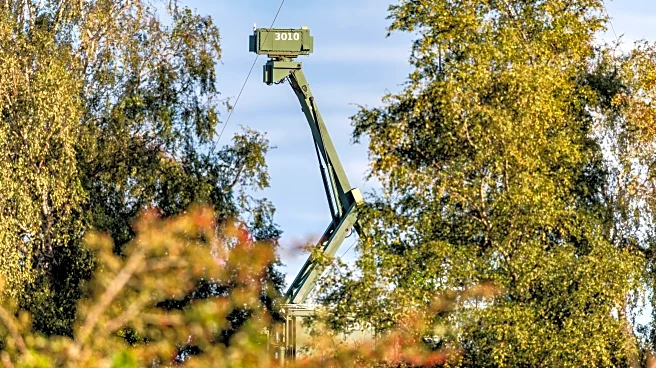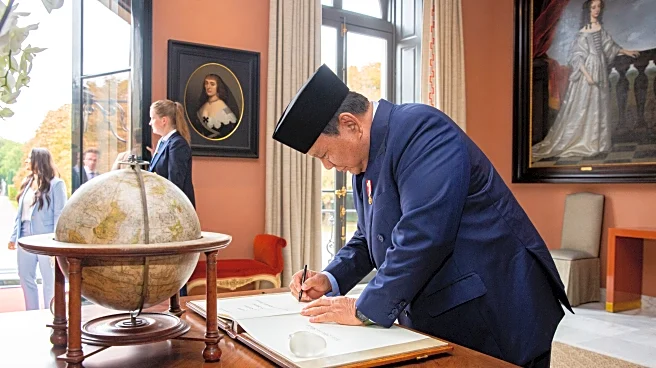What's Happening?
Ecowende and Van Oord have commenced offshore construction at the Hollandse Kust West wind farm, focusing on eco-friendly scour protection to enhance marine biodiversity. The project involves installing specially designed scour protection around monopile foundations, using stones of varying sizes to create habitats for marine life. The initiative aims to transform traditional scour protection into a contributor to marine ecosystems, supporting species like the Atlantic cod. The wind farm, located off the Dutch coast, will have a capacity of 760 MW, contributing to greener electricity production in the Netherlands.
Why It's Important?
The project represents a significant advancement in offshore wind farm construction, integrating ecological considerations into infrastructure development. By enhancing marine biodiversity, the initiative addresses environmental concerns associated with offshore wind farms, potentially setting a new standard for sustainable practices in the industry. The wind farm's capacity will contribute to renewable energy goals, supporting the transition to cleaner energy sources. The collaboration between Ecowende and Van Oord highlights the importance of innovation in achieving environmental sustainability.
What's Next?
The wind farm is expected to be fully operational by late 2026, with ongoing monitoring to assess the ecological impact of the scour protection. The project's success may influence future offshore wind developments, encouraging similar ecological approaches. Stakeholders, including environmental organizations and industry leaders, will likely observe the project's outcomes, advocating for broader adoption of biodiversity-focused practices.
Beyond the Headlines
The initiative underscores the potential for infrastructure projects to contribute positively to environmental conservation, challenging traditional approaches to construction. It raises questions about the balance between development and ecological preservation, emphasizing the need for innovative solutions. The project may inspire further research into the integration of biodiversity considerations in renewable energy projects.











